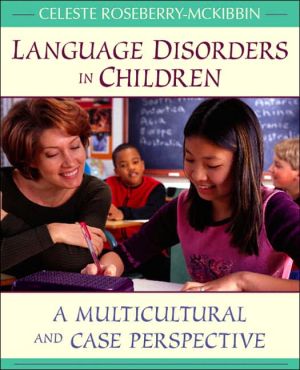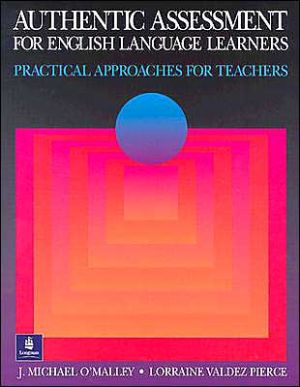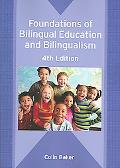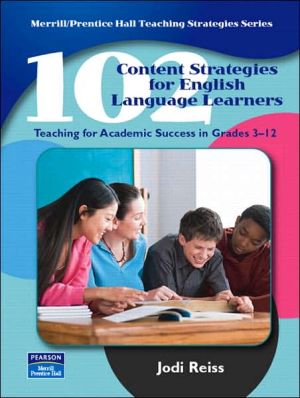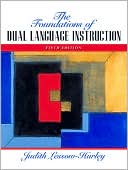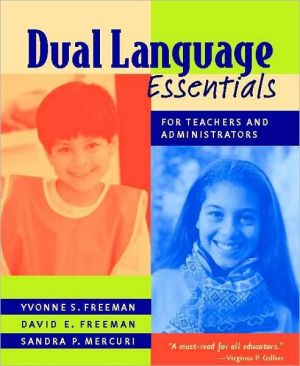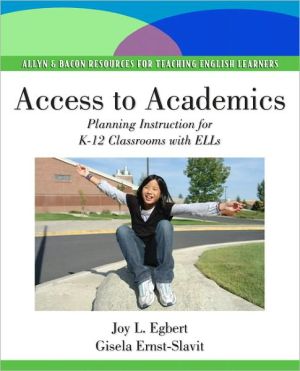Language Disorders in Children: A Multicultural and Case Perspective
Language Disorders in Children: A Multicultural and Case Perspective, 1/E\ Celeste Roseberry-McKibbin, California State University, Sacramento\ ISBN: 0205393403\ Grounded in research with a focus on evidence-based practice, Language Disorders in Children addresses child language disorders from a culturally and linguistically diverse perspective. Unique to the field of speech-pathology, this first edition provides a valuable foundation for students with little-to-no background in language...
Search in google:
Combining a strong multicultural emphasis with an effective blend of research and practice, this introductory textbook is unique to the field of speech-pathology.Language Disorders in Children, 1/e is written in an engaging and easy-to-read style and provides a valuable foundation for students with little to no background in language disorders. Unparalleled in the field for its emphasis on child language disorders through a culturally and linguistically diverse (CLD) perspective, this text devotes several chapters exclusively to serving children from CLD backgrounds.Strongly grounded in research with a focus on evidence-based practice, this text examines the full scope of language disorders in children, and offers several pedagogical devices within the text which help students interact with and learn the material.
CHAPTER ONE–INTRODUCTION TO LANGUAGE AND LANGUAGE DISORDERSPREVIEW OUTLINECASE STUDYINTRODUCTION Cultural and Linguistic DiversityEvidence-Based PracticeDEFINITIONS AND TERMINOLOGYSemanticsMorphologySyntaxPragmaticsPhonologySummaryAPPROACHES TO LANGUAGE DISORDERSTerminologyModels of Language DisordersGeneral Characteristics of Children with Specific Language ImpairmentSummaryLINGUISTIC CHARACTERISTICS OF CHILDREN WITH SPECIFIC LANGUAGE IMPAIRMENTSemanticsSyntaxMorphologyPragmaticsWritten LanguageSummaryPROCESSING CHARACTERISTICS OF CHILDREN WITH SPECIFIC LANGUAGE IMPAIRMENTBasic PrinciplesSummaryCHAPTER HIGHLIGHTSSTUDY AND REVIEW QUESTIONSANSWERS TO STUDY AND REVIEW QUESTIONSCHAPTER 2: LANGUAGE DEVELOPMENT IN CHILDREN: A REVIEWPREVIEW OUTLINECASE STUDYCHAPTER INTRODUCTIONTHEORIES OF LANGUAGE DEVELOPMENTBehaviorial TheoryNativist TheoryCognitive TheorySocial Interactionism TheoryInformation Processing TheoryEducation, Language, and Literacy Development in the School-Age YearsSummaryNORMAL LANGUAGE DEVELOPMENT: DEVELOPMENTAL MILESTONESThe Role of the Environment in Language DevelopmentTraditional Language Development MilestonesBirth to One YearOne to Two YearsSemantics SyntaxPragmaticsTwo to Three YearsSemantics SyntaxMorphologyPragmaticsThree to Four YearsSemantics SyntaxMorphologyPragmaticsFour to Five YearsSemantics SyntaxMorphologyPragmaticsFive to Six YearsSemantics SyntaxMorphologyPragmaticsSix to Seven YearsSemantics SyntaxMorphologyPragmaticsSeven to Nine YearsSemantics SyntaxMorphologyPragmaticsEducation, Language, and Literacy Development in the School-Age YearsSummaryCHAPTER HIGHLIGHTSSTUDY AND REVIEW QUESTIONSANSWERS TO STUDY AND REVIEW QUESTIONSCHAPTER 3: THE IMPACT OF SECOND LANGUAGE ACQUISITION AND BILINGUALISM ON CHILDREN’S DEVELOPING LANGUAGEPREVIEW OUTLINECASE STUDYCHAPTER INTRODUCTIONLANGUAGE PROFICIENCY IN BILINGUAL CHILDRENSeparate vs. Common Underlying ProficiencySimultaneous vs. sequential language acquisitionAdditive and subtractive bilingualismComprehensible inputDeveloping bilingual language proficiencyMonolingual norm assumptionBilingual educationBasic Interpersonal Communication Skills and Cognitive-Academic Language ProficiencySummaryNORMAL PROCESSES OF SECOND LANGUAGE ACQUISITIONSilent periodLanguage lossLanguage transferInterlanguageCodeswitchingSummaryCOGNITIVE-LINGUISTIC VARIABLES IN SECOND LANGUAGE ACQUISITIONUse of routinesHigh vs. low input generatorsPractice opportunitiesAvoidanceModelingSummaryAFFECTIVE VARIABLES IN SECOND LANGUAGE ACQUISITIONPersonalityAnxiety levelMotivationSummaryCHAPTER HIGHLIGHTSSTUDY AND REVIEW QUESTIONSANSWERS TO STUDY AND REVIEW QUESTIONSCHAPTER 4: FACTORS IMPACTING LANGUAGE DEVELOPMENT IN CULTURALLY AND LINGUISTICALLY DIVERSE CHILDRENPREVIEW OUTLINECASE STUDYINTRODUCTIONCULTURE AND CULTURAL DIVERSITYVariables Impacting Behavior of Members of Various Cultural GroupsIncreasing Cultural CompetenceSummaryCONSIDERATIONS IN WORKING WITH STUDENTS FROM IMMIGRANT AND REFUGEE FAMILIESGeneral IssuesAcculturationConsiderations in Working with Internationally Adopted ChildrenSummaryIMPACT OF RELIGIOUS AND CULTURAL BELIEFS ON SERVICE DELIVERY Beliefs about Causes of DisabilitiesBeliefs about Treatment for DisabilitiesSummaryWORKING WITH STUDENTS WHO SPEAK AFRICAN AMERICAN ENGLISHGeneral ConsiderationsCharacteristics of CommunicationSummaryWORKING WITH STUDENTS WHO SPEAK SPANISH-INFLUENCED ENGLISHGeneral ConsiderationsCharacteristics of CommunicationSummaryWORKING WITH STUDENTS WHO SPEAK ENGLISH INFLUENCED BY ASIAN LANGUAGESGeneral ConsiderationsCharacteristics of CommunicationSummaryCHAPTER HIGHLIGHTSSTUDY AND REVIEW QUESTIONSANSWERS TO STUDY AND REVIEW QUESTIONSCHAPTER 5: ASSESSMENT OF CHILDREN WITH LANGUAGE IMPAIRMENTS: BASIC PRINCIPLESPREVIEW OUTLINECASE STUDYINTRODUCTIONPRELIMINARY COMPONENTS OF ASSESSMENTScreeningCase HistoryThe Pre-Evaluation ProcessSummaryTHE USE OF STANDARDIZED TESTSDefinitionsTest ValidityTest ReliabilityPotential Misuses of Standardized TestsSummaryCONSIDERATIONS IN USING STANDARDIZED TESTS WITH CLD STUDENTSFormal Test AssumptionsSources of Bias in the use of Standardized Tests with CLD StudentsModifying Standardized Tests for use with CLD StudentsSummaryLANGUAGE SAMPLESIntroductionStrategies for Collecting Language SamplesInformal Strategies for Evaluating Morphology and SyntaxInformal Evaluation of Language UseSummaryOTHER ALTERNATIVES TO STANDARDIZED ASSESSMENTIntroductionLegal Considerations in the Assessment of CLD StudentsDynamic AssessmentAssessment of Information Processing SkillsAssessment of Narrative SkillsPortfolio AssessmentUse of Interpreters in the Assessment of CLD StudentsSummaryCLD STUDENTS: LANGUAGE DIFFERENCE OR LANGUAGE IMPAIRMENT?IntroductionDiagnostic PieSummaryCHAPTER HIGHLIGHTSSTUDY AND REVIEW QUESTIONSCHAPTER 6: INTERVENTION FOR CHILDREN WITH LANGUAGE IMPAIRMENTS: GENERAL PRINCIPLES AND STRATEGIESPREVIEW OUTLINECASE STUDYGENERAL PRINCIPLES OF INTERVENTION FOR CHILDREN WITH LANGUAGE IMPAIRMENTSPurposes of InterventionBasic Approaches to Language InterventionStructure of Therapy SessionsUsing Reinforcement in Language TherapySchedules of ReinforcementSummarySPECIFIC TREATMENT TECHNIQUESIncidental TeachingFocused StimulationSelf-TalkParallel TalkExpansionExtensionMand-ModelRecastingJoint RoutinesJoint Book ReadingWhole LanguageUsing SabotageModifying Linguistic InputSummaryFACILITATING GENERALIZATION OF TREATMENT TARGETS TO OTHER SETTINGSIntroductionConnecting with Significant Others: General PrinciplesSuggestions for Working with CaretakersSuggestions for Working with Classroom TeachersSummarySPECIAL CONSIDERATIONS FOR CLD CHILDREN WITH LANGUAGE IMPAIRMENTSLanguage of InterventionProgram Placement AlternativesIncorporating Multiculturalism into Treatment ActivitiesSuggestions for Therapy with CLD Students with LIInvolving the Families of CLD Students with LISummaryCHAPTER HIGHLIGHTS STUDY AND REVIEW QUESTIONSANSWERS TO STUDY AND REVIEW QUESTIONSCHAPTER 7: LANGUAGE IMPAIRMENT IN TODDLERS AND PRESCHOOLERSPREVIEW OUTLINEINTRODUCTIONBackground FactsEstablished Risk Factors for Developing Language ImpairmentConditions that put Children at Risk for Developing Language ImpairmentSummaryCHARACTERISTICS OF TODDLERS AND PRESCHOOLERS WITH LANGUAGE IMPAIRMENTSPrecursors of Language DevelopmentLinguistic Characteristics of Young Children with Language ImpairmentsLate TalkersSummaryASSESSMENT OF TODDLERS AND PRESCHOOLERS WITH LANGUAGE IMPAIRMENTSGeneral PrinciplesStrategies for Evaluating Language SkillsSummaryINTERVENTION FOR TODDLERS AND PRESCHOOLERS WITH LANGUAGE IMPAIRMENTGeneral PrinciplesIndirect Intervention: Working with Caregivers and TeachersIncreasing Oral Language Skills: Direct Intervention TechniquesIncreasing Emergent Literacy Skills: Direct Intervention TechniquesServing Toddlers and Preschoolers in the Public School SettingSummaryADDITIONAL CONSIDERATIONS FOR CLD CHILDREN AND THEIR FAMILIESWorking with FamiliesServing CLD Children with Language Impairments in Day Care and Preschool SettingsSummaryCHAPTER HIGHLIGHTSSTUDY AND REVIEW QUESTIONSANSWERS TO STUDY AND REVIEW QUESTIONSCHAPTER 8 LANGUAGE IN SCHOOL-AGED STUDENTS AND ADOLESCENTS WITH LEARNING DISABILITIESPREVIEW OUTLINECASE STUDYCHAPTER INTRODUCTIONLearning Disability: Definition, Identification, and CharacteristicsOral and Written Language: The RelationshipFederal Laws Impacting Service Delivery to Students with Learning DisabilitiesORAL COMMUNICATION PROBLEMS OF STUDENTS WITH LEARNING DISABILITIESPragmatic SkillsNarrative SkillsSemantic SkillsGrammatical SkillsSummaryWRITTEN LANGUAGE PROBLEMS IN CHILDREN WITH LEARNING DISABILITIESReading Disabilities (Dyslexia)General Facts Visual-Perceptual/Motor Theories Deficits in Phonological ProcessingWriting DisabilitiesSpelling DisabilitiesSummaryASSESSMENT OF STUDENTS WITH LEARNING DISABILITIESChallenges in Nonbiased AssessmentPrinciples of Nonbiased AssessmentSummaryINTERVENTION FOR SCHOOL-AGED CHILDREN AND ADOLESCENTS WITH LEARNING DISABILITIESService Delivery in the Public SchoolsCollaboration in the General Education ClassroomSpecific Strategies for Teaching Students with Learning DisabilitiesBasic Principles Providing Support for Written Language Skills Additional Considerations for CLD StudentsSummaryCHAPTER HIGHLIGHTSSTUDY AND REVIEW QUESTIONSANSWERS TO STUDY AND REVIEW QUESTIONSCHAPTER 9: LANGUAGE IN CHILDREN WITH DEVELOPMENTAL DISABILITIESPREVIEW OUTLINECASE STUDY INTRODUCTIONMENTAL RETARDATION: DEFINITION AND CAUSESDefinition and ClassificationsCauses of MRSummaryCOGNITIVE AND LINGUISTIC CHARACTERISTICS OF STUDENTS WITH MENTAL RETARDATIONThe Relationship Between Language and CognitionCognitive and Processing Characteristics of Children with MRLanguage Characteristics of Children with MRPhonological Characteristics Morphological and Syntactic Characteristics Semantic Characteristics Pragmatic CharacteristicsChildren with Down SyndromeSummaryAUTISM SPECTRUM DISORDER: DEFINITION AND CAUSESDefinitionCauses of ASDSummaryBEHAVIORAL, COGNITIVE, AND LINGUISTIC CHARACTERISTICS OF STUDENTS WITH AUTISM SPECTRUM DISORDERSTheory of MindBehavioral CharacteristicsPhonological CharacteristicsMorphological and Syntactic CharacteristicsSemantic CharacteristicsPragmatic CharacteristicsWritten Language CharacteristicsSummaryFOUNDATIONAL PRINCIPLES OF ASSESSMENTBasic PrinciplesParent Interview and Case HistorySpecific Considerations in the Assessment of Children with ASD and/or MRSummaryFOUNDATIONAL PRINCIPLES OF TREATMENTGeneral PrinciplesUtilizing Principles of BehaviorismReinforcementGeneralizationWritten LanguagePractical Techniques and Strategies for Increasing Language SkillsInclusion in General Education Classrooms Training Social Skills Training Attention and Listening Skills Students with Severe DeficitsSupports for Children with ASD and MRConsiderations for Working with CLD Students and Their FamiliesSummaryCHAPTER HIGHLIGHTSSTUDY AND REVIEW QUESTIONSANSWERS TO STUDY AND REVIEW QUESTIONSCHAPTER 10 THE IMPACT OF ENVIRONMENTAL FACTORSON LANGUAGE DEVELOPMENTPREVIEW OUTLINECASE STUDYCHAPTER INTRODUCTIONCHILDREN FROM LOW-SOCIOECONOMIC STATUS BACKGROUNDSBackground InformationLanguage and Behavioral CharacteristicsImplications for Service DeliveryAdditional Considerations for CLD Children from Low-SES BackgroundsSummaryCHILDREN FROM BACKGROUNDS OF ABUSE AND/OR NEGLECTBackground InformationLanguage and Behavioral CharacteristicsImplications for Service DeliveryAdditional Considerations for CLD Children from Backgrounds of Abuse and/or NeglectSummaryCHILDREN WITH ATTENTION DEFICIT HYPERACTIVITY DISORDERBackground InformationLanguage and Behavioral CharacteristicsImplications for Service DeliveryAdditional Considerations for CLD ChildrenSummaryCHILDREN FROM BACKGROUNDS INVOLVING MATERNAL SUBSTANCE ABUSEBackground InformationLanguage and Behavioral CharacteristicsImplications for Service DeliveryAdditional Considerations for CLD ChildrenSummaryCHILDREN WITH HIV/AIDSBackground InformationLanguage and Behavioral CharacteristicsImplications for Service DeliveryAdditional Considerations for CLD ChildrenSummaryCHILDREN WITH BEHAVIORAL AND EMOTIONAL PROBLEMSBackground InformationLanguage and Behavioral CharacteristicsImplications for Service DeliveryAdditional Considerations for CLD ChildrenSummaryCHAPTER HIGHLIGHTSSTUDY AND REVIEW QUESTIONSANSWERS TO STUDY AND REVIEW QUESTIONSCHAPTER 11: LANGUAGE IMPAIRMENT IN SPECIAL POPULATIONSPREVIEW OUTLINECHILDREN WITH HEARING IMPAIRMENTSIntroduction and Basic PrinciplesImplications for Assessment and InterventionEarly Assessment and Intervention Basic Principles of Aural Rehabilitation Communication and Educational Approaches to Language Development for Hearing ImpairedChildrenAdditional Considerations for CLD Children and Their FamiliesSummaryCHILDREN WITH VISUAL IMPAIRMENTSIntroduction and Basic PrinciplesImplications for Assessment and InterventionAssessment InterventionSummaryCHILDREN WITH SEVERE/MULTIPLE DISABILITIES Cerebral PalsySpina BifidaMuscular DystrophySpinal Cord InjurySummaryAUGMENTATIVE, ALTERNATIVE COMMUNICATION Introduction and Basic PrinciplesImplications for Assessment and InterventionAssessment InterventionAdditional Considerations for CLD Children and Their FamiliesSummaryCHAPTER HIGHLIGHTSSTUDY AND REVIEW QUESTIONSANSWERS TO STUDY AND REVIEW QUESTIONSCHAPTER 12 SCHOOL LANGUAGE AND CLASSROOM PROGRAMS: COLLABORATING WITH PARENTS AND SCHOOL PERSONNELAlejandro E. Brice and Roanne G. BricePREVIEW OUTLINECASE STUDYINTRODUCTIONThe Changing Nature of Special EducationEducational ReformProgram TypesSummaryCOLLABORATION VERSUS CONSULTATIONDefinitionsModels of CollaborationInstructional Strategies for use with MiguelInstructional Strategies for use with JohnSuggestions for Collaboration with Classroom Teachers: Enhancing Students’ Listening and Attention SkillsStrategies for Collaboration with Classroom Teachers: Enhancing Students’ Self EsteemCollaborative InstructionStrategies for Collaborating with AdministratorsSummaryCONCLUSIONSCHAPTER HIGHLIGHTSSTUDY AND REVIEW QUESTIONSANSWERS TO STUDY AND REVIEW QUESTIONS
\ From the Publisher“The book presents current information with breadth and depth. I believe it will be extremely useful to the students of these introductory classes. The examples are good pedagogical devices.”\ -Vera Gutierrez-Clellen, San Diego State University\ “This book is an excellent reference for courses dealing with not only the identification of CLD students but also suggestions for therapeutic procedures. … The pedagogical features and learning devices are excellent. There are enough case studies, charts, diagrams and expansion points that will be beneficial to the student learning as well as assisting the instructor in teaching the material. The case study examples are extremely useful and will be beneficial for use in the classroom.”\ -Janice M. Wright, Ohio University\ "This book is so unique in many ways that I would have difficulty trying to compare it to other texts on language disorders. In my opinion, there is nothing that equals it. I would definitely select it as my primary text for a language disorders class."\ -Thalia Coleman, Appalachian State University\ “It is clear, interesting and fun to read. The stories and case summaries are very interesting. The information is accurate, current and easy to understand.”\ -Priscilla Nellum Davis, University of Alabama\ \ \
